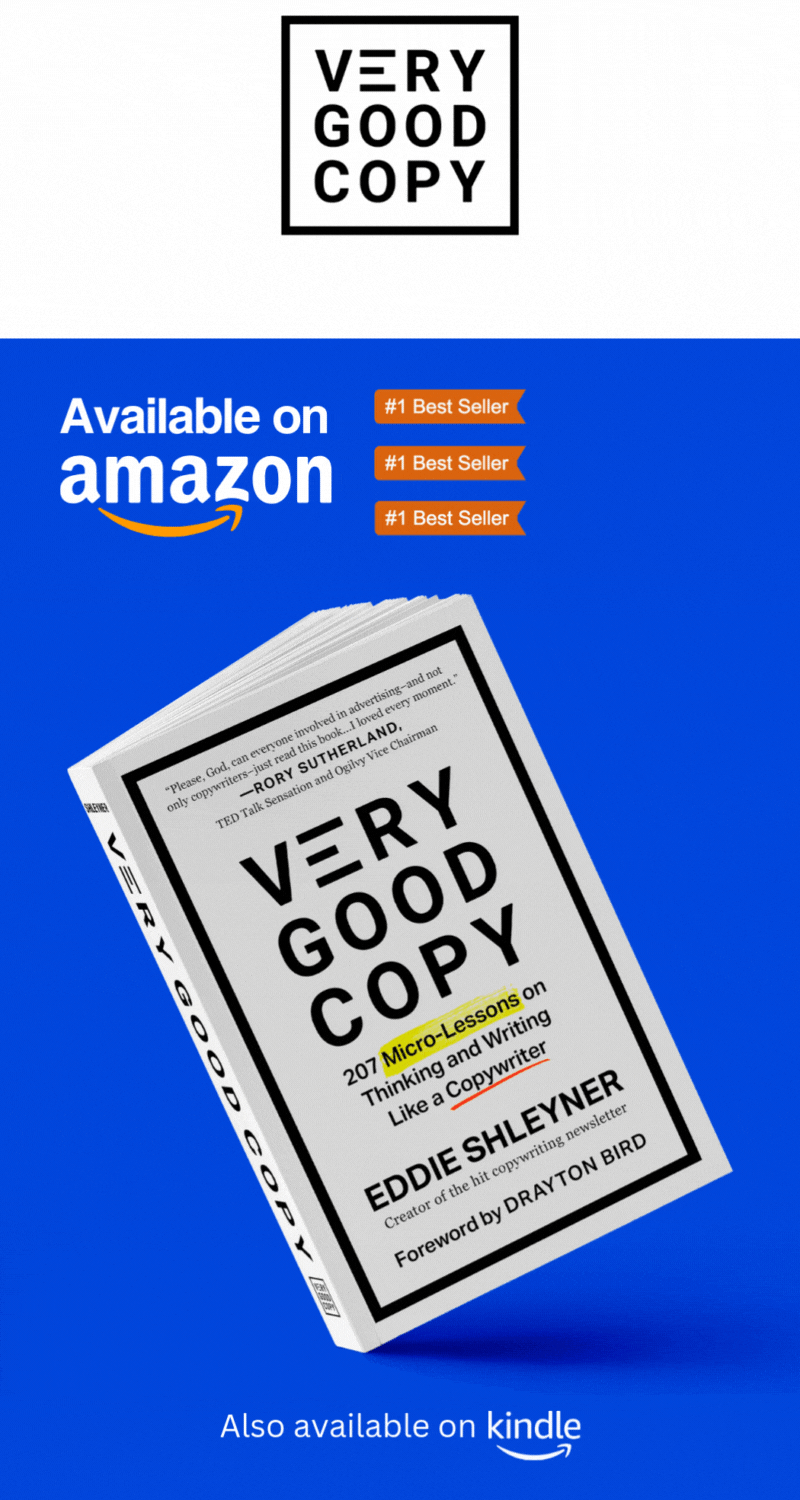Enjoy 207 micro-lessons inside VeryGoodCopy: The Book →
358 words on
Writing better dialogue:
“Hey, Eddie.”
“Hey,” I said. “How are you?”
“Doing good,” he said. “Thanks again for taking my call.”
“No problem.” I leaned back in my chair.
“I read your article,” he said, “the one about dialogue.”
“Yep.”
“And I’ve been practicing since...”
“Sure,” I said. “I can see!”
I had his email open. It had samples of his work, articles topped and tailed with dialogue. (He was a junior copywriter. Wrote me a charming email. I was happy to help.)
“So—” said Junior.
“I guess I’m wondering why your dialogue sounds so much better than mine?”
We chuckled. “Gimme a second?” I said. “Lemme just go through it one more time.” The line went quiet. Sydney was gnawing her antler by my feet. “Actually, can I put you on mute?” I said. “I’m gonna read it out loud.”
“Sure.”
“Alright.” I put Junior on mute and read the dialogue aloud once, twice. “Okay…” I unmuted the call.
“This is good dialogue,” I said. “It sounds like how people talk.”
“Thank you.”
“But here’s your problem,” I said, “your dialogue tags are too loud. And too frequent for the number of people in the scene.”
Dialogue tags—like “I said” or “he said” or “she said”—tell The Reader who’s speaking. They can also be used to break longer dialogue sections into digestible chunks, giving your writing a more natural rhythm and cadence.
Junior’s tags used something called said-bookisms:
ⓧ I exclaimed
ⓧ he lamented
ⓧ she pronounced
He also used something called adverbial tags:
ⓧ I said quietly
ⓧ he said hesitantly
ⓧ she said excitedly
“Too loud?”
“Yes, they’re too glaring and obvious,” I said. “They’re drawing attention away from the scene. The dialogue itself should tell the whole story. Your tags should be invisible.”
“How do I make them invisible?” asked Junior.
“Well, first of all, you don’t always need to use one.”
“Ah.”
“And when you do use one, only use two verbs: said or asked. No adverbs.”
“That’s it?”
“That’s it.”
“It’s that simple?”
“It is.”
It was quiet on the line again. Sydney was asleep now, her head resting on my toes.
“Where did you learn this?” he asked.
“Hemingway,” I said.





